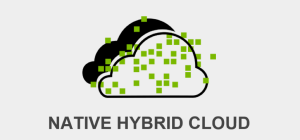Software companies are quickly taking over traditional industries. Uber is replacing the traditional taxi business by completely bypassing the regulatory systems that allowed them to maintain a monopoly in their cities. AirBnB has consumed a growing portion of the hotel industry’s customers without bidding on the prime real-estate in downtown New York City, or spending millions developing the most relaxing mattresses or hotel room. Netflix has stolen millions of customers (so-called “cord-cutters”) from traditional media companies and cable providers, all without (until recently) producing a single piece of original content.
In 2016, private equity markets gave Uber a valuation higher than GM.
All these examples show how even dominant players in well-established industries are being disrupted by young digital start-ups which, in the example of Uber, had launched barely 5 years ago. In this new digital market, no competitive advantage is truly sustainable. Change and innovation can no longer be seen as separate from the organization’s core activities, because customer demands and trends are constantly changing as well. Supply and demand side economies of scale can be disrupted by platforms, exclusive channel access can be bypassed through new media, and regulations can be bypassed by agile and influential new entrant. Disruption has become the new normal and the reality for businesses today is that the only way to cope with the forces imposed by digital startups and asymmetric business models is to join in.
So if there’s no question as to whether you should be more innovative and disruptive in your own industry, all that’s left is the how. Traditional business strategy has long revolved around treating the CEO as a kind of “Warrior God,” a general on the top of the hill looking down on his armies battling the competition, seeing everything and directing his troops where they can make the most impact and bring victory to the firm. In practice, the fog of war is very real, and by the time word reaches the CEO about the next great opportunity, it’s already passed.
The answer (to continue a metaphor) is to empower the field officers. Line of business managers who are on the front lines, able to spot opportunities as they come, and the key to being fast enough to capitalize on these opportunities is with a framework known as cloud-native.
This new way of building applications quickly, to run more reliably at scale in cloud environments is at the heart of the digital revolution sweeping through markets. At the heart of this method is DevOps, an organizational shift which brings together IT and development teams to build and manage applications. At the end of the day, this means moving faster, reducing rework and other inefficiencies, and delivering a more secure, reliable, and innovative application. Building applications quickly, integrating near real-time analytics capabilities, and operating it all within an agile, innovation-focused culture is the reason that Uber, Airbnb, and Netflix are able to displace entire industries with software.
Implementing these techniques and tools might be easy within a company of 50 people, but infinitely more complicated in a firm of 5,000 or 15,000. Because cloud-native technologies are so new, many organizations lack the expertise to stand up and manage a platform capable of supporting the technologies, not including the additional requirements that come with enterprise IT, such as control processes, show-back, high availability, and security.
Dell EMC, partnered with its strategically aligned businesses in Pivotal and VMware, make this transformation easier. With the turnkey platform, Native Hybrid Cloud, Dell EMC fully engineers and sustaining the entire platform, works with engineers and IT to integrate these new techniques, and helps businesses innovate, and compete in the new digital economy.


